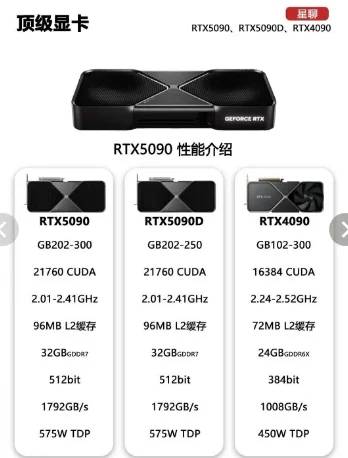The highly anticipated RTX 5090 series has finally revealed its groundbreaking benchmark results. After rigorous testing, we discovered nearly identical performance between the 5090 and 5090D models—both delivering exceptional power for gaming, productivity, and AI applications.

🎮 **Gaming Performance**: The 5090 series shatters expectations with a staggering 30% boost in rasterization and an impressive 40% leap in ray tracing performance compared to its predecessor, the 4090. Gamers can now immerse themselves in breathtakingly smooth, ultra-realistic worlds like never before.
💼 **Productivity Powerhouse**: With its massive VRAM upgrade, the 5090 series revolutionizes AI performance—a game-changer for professionals tackling intensive computational tasks. Creative workflows and complex simulations have never been more effortless.
💰 **Pricing Insights**: The 5090D starts at around ¥20,000, while premium custom models like the Noc series push the price ceiling even higher. Industry whispers suggest the flagship 5090 could command a premium price tag of approximately ¥30,000—justifying its cutting-edge performance.
I’m really torn between these two models since the performance difference seems negligible. But if I had to pick, the slight edge in ray tracing might nudge me towards the 5090D for future-proofing my gaming experience. It’s crazy how much of a leap this generation is compared to the 4090. I just hope the pricing doesn’t jump too much to match the improved specs!
You’re absolutely right! The performance gap is indeed small, but the ray tracing improvement on the 5090D could make a noticeable difference down the line. It’s exciting to see such advancements, and while prices can be steep, they often reflect the added value. Thanks for sharing your thoughts—happy to hear more from you as you decide!
I’m really torn between these two models—on one hand, the performance seems almost identical, but the slight differences could matter depending on the workload. For someone like me who does a lot of heavy gaming and some light video editing, the extra ray tracing boost sounds appealing, but I’ll definitely need to check pricing to see if it’s worth the premium.
It’s interesting that there’s barely any performance difference between the 5090 and 5090D, especially since they look identical. I wonder if the price will be the deciding factor for most buyers, though. Either way, these cards seem like monsters for both games and creative work. I just hope they don’t need a fridge-sized case to cool them down!
You’re absolutely right! The subtle differences might indeed come down to price for most people. And you’re not alone in hoping they stay manageable—balancing power with practical cooling solutions is key. Thanks for your insightful comment! These GPUs really do feel like future-proof beasts for gaming and content creation.
It’s interesting how similar the 5090 and 5090D perform overall, but I’d still lean towards the regular 5090 for gaming since that extra 10% ray tracing improvement sounds nice. Though, if power efficiency is a big concern, the 5090D could be worth considering despite the minor difference in gaming performance. It’s great to see such significant leaps in ray tracing though—it’ll make future games look amazing!
Absolutely agree! The slight edge in ray tracing on the 5090 can make a noticeable difference, especially in modern titles. But you’re spot on about the 5090D being a solid choice for those prioritizing power efficiency—every watt counts! Either way, it’s exciting to see these advancements paving the way for even more immersive gaming experiences. Thanks for sharing your thoughts!
I’m really torn between the 5090 and 5090D since their performance seems almost identical, but the slight differences in power consumption could be a deciding factor for me. It’s crazy how much ray tracing has improved; 40% over the 4090 is just insane for gaming and content creation alike. I wonder if future games will even be able to fully utilize this level of hardware capability. Either way, it feels like we’re entering a new era of PC performance.
You’re absolutely right that ray tracing advancements are incredible—those gains over the 4090 are mind-blowing! Power consumption can definitely be a key consideration if you’re mindful of your electric bill or looking to stay eco-friendly. I agree, it’s an exciting time to see where game developers push these GPUs next. Thanks for sharing your thoughts—it’s clear you’ve done your homework, and it’ll be fascinating to see how things evolve!